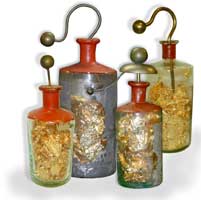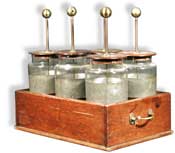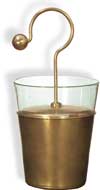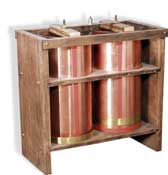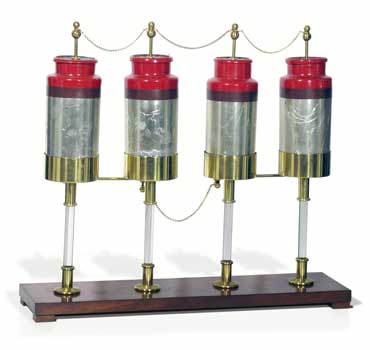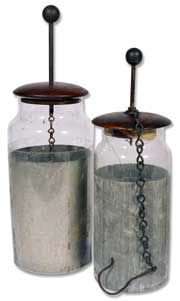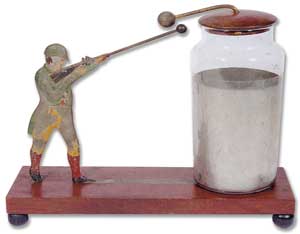|
|
The "Electric Phial"
|
The Leyden jar originated about 1746 through the work of Dutch physicist Pieter van Musschenbroek of the University of Leyden and Ewald Georg von Kleist of Pomerania, working independently. A Leyden jar consists of a glass jar with an outer and inner metal coating covering the bottom and sides nearly to the neck. A brass rod terminating in an external knob passes through a wooden stopper and is connected to the inner coating by a loose chain. When an electrical charge is applied to the external knob, positive and negative charges accumulate from the two metal coatings respectively, but they are unable to discharge due to the glass between them. The result is that the charges will hold each other in equilibrium until a discharge path is provided. Leyden jars were first used to store electricity in experiments, and later as a condenser in early wireless equipment. |
Examples of Leyden Jars from my collection:
|
|
|
|
|
|
A Lane apparatus is a Leyden Jar fitted with a calibrated spark gap. They were used primarily in medical applications, in order to regulate the amount of voltage applied to the patient. |
This jar can be separated into three parts: The outer metal can, the glass jar, and the inner metal electrode. It was used to demonstrate that the charge in a Leyden jar is held in the glass, not the metal. |
|
|
|
|
|
|
|
Electrical
Sportsman |
|
| Contact |
| Back | Next | Home |
